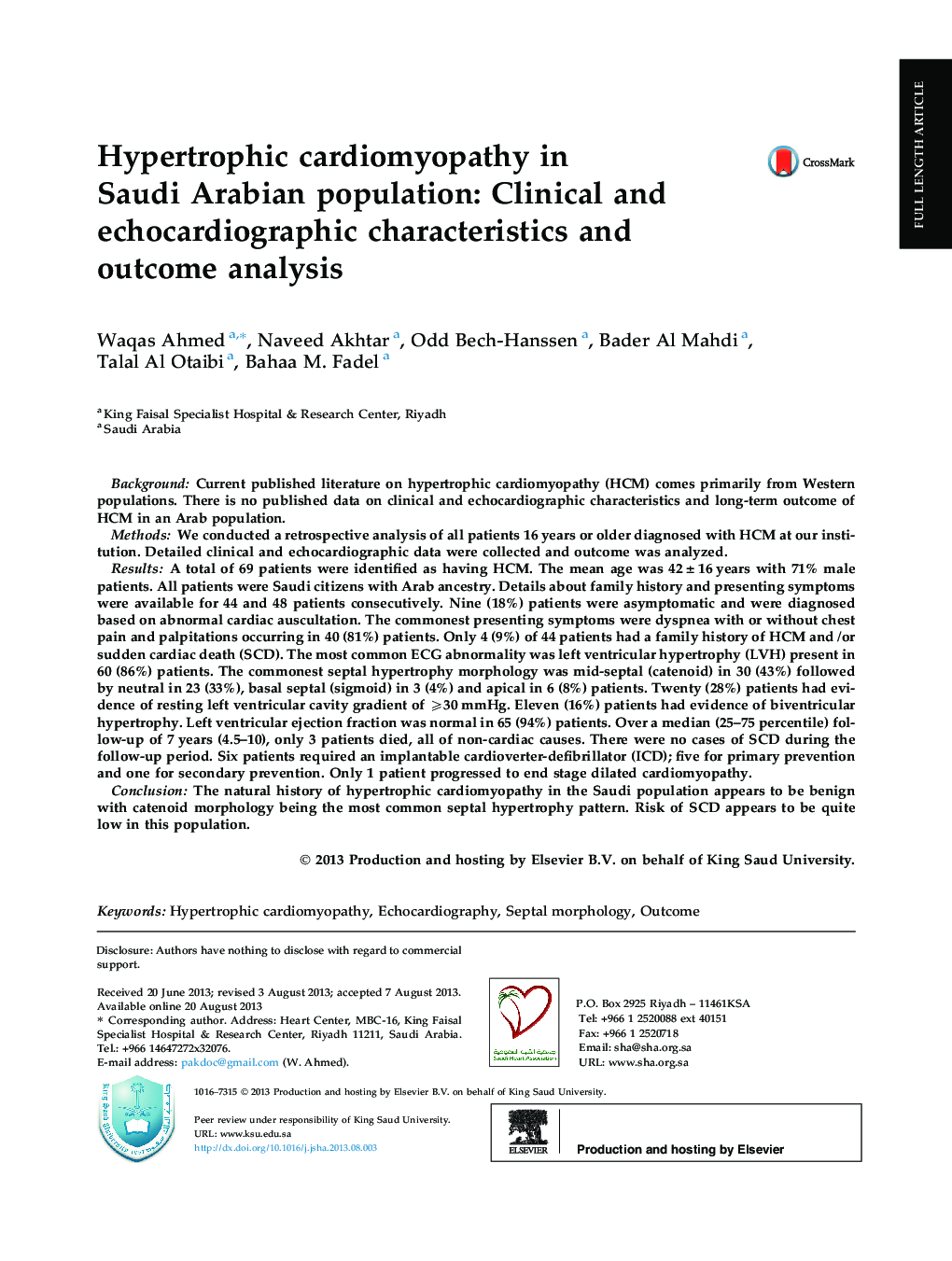| کد مقاله | کد نشریه | سال انتشار | مقاله انگلیسی | نسخه تمام متن |
|---|---|---|---|---|
| 2978007 | 1179510 | 2014 | 7 صفحه PDF | دانلود رایگان |
BackgroundCurrent published literature on hypertrophic cardiomyopathy (HCM) comes primarily from Western populations. There is no published data on clinical and echocardiographic characteristics and long-term outcome of HCM in an Arab population.MethodsWe conducted a retrospective analysis of all patients 16 years or older diagnosed with HCM at our institution. Detailed clinical and echocardiographic data were collected and outcome was analyzed.ResultsA total of 69 patients were identified as having HCM. The mean age was 42 ± 16 years with 71% male patients. All patients were Saudi citizens with Arab ancestry. Details about family history and presenting symptoms were available for 44 and 48 patients consecutively. Nine (18%) patients were asymptomatic and were diagnosed based on abnormal cardiac auscultation. The commonest presenting symptoms were dyspnea with or without chest pain and palpitations occurring in 40 (81%) patients. Only four (9%) of 44 patients had a family history of HCM and /or sudden cardiac death (SCD). The most common ECG abnormality was left ventricular hypertrophy (LVH) present in 60 (86%) patients. The commonest septal hypertrophy morphology was mid-septal (catenoid) in 30 (43%) followed by neutral in 23 (33%), basal septal (sigmoid) in 3 (4%) and apical in 6 (8%) patients. Twenty (28%) patients had evidence of resting left ventricular cavity gradient of ⩾30 mmHg. Eleven (16%) patients had evidence of biventricular hypertrophy. Left ventricular ejection fraction was normal in 65 (94%) patients. Over a median (25–75 percentile) follow-up of 7 years (4.5–10), only three patients died, all of non-cardiac causes. There were no cases of SCD during the follow-up period. Six patients required an implantable cardioverter-defibrillator (ICD); five for primary prevention and one for secondary prevention. Only one patient progressed to end stage dilated cardiomyopathy.ConclusionThe natural history of hypertrophic cardiomyopathy in the Saudi population appears to be benign with catenoid morphology being the most common septal hypertrophy pattern. Risk of SCD appears to be quite low in this population.
Journal: Journal of the Saudi Heart Association - Volume 26, Issue 1, January 2014, Pages 7–13
